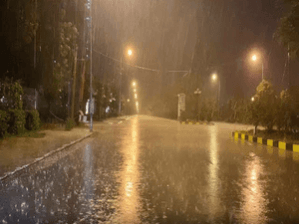
The Regional Meteorological Centre (RMC) has issued a yellow alert from November 12 to November 15, warning of heavy to very heavy rainfall expected in Chennai and 15 other districts in Tamil Nadu. This alert is a result of a low-pressure area that formed over the southwest Bay of Bengal on Monday. The weather department has explained that this low-pressure system developed due to cyclonic circulation over the southwest Bay of Bengal.
This cyclonic circulation extends up to 5.8 km above mean sea level and is tilting southwestward. It is likely to move toward the Tamil Nadu and Sri Lanka coasts over the next two days. The RMC has forecast heavy rains with thunderstorms in several districts in Tamil Nadu.
On November 14 and 15, the RMC forecast heavy rains over several districts due to the low-pressure area over the sea. The weather department has also advised fishermen to avoid venturing into the sea until Sunday, November 17, due to squally weather. Wind speeds are expected to reach 35-45 km/h, gusting up to 55 km/h, along the northern and southern Tamil Nadu coast, the Gulf of Mannar, and the adjoining Comorin area.

Seasonal data for the northeast monsoon, covering October 1 to November 6, recorded 247 mm of rainfall in Tamil Nadu, which is 13 per cent above the normal 219 mm for this period. Coimbatore district received the highest amount of rainfall at 410 mm, 102 per cent above the seasonal average.
Water levels in the Varaha River are rising as excess water from the Mullaperiyar Dam flows into smaller reservoirs, now reaching full capacity. Officials have advised people to avoid riverbanks and refrain from bathing in the Kumbakkarai Waterfalls due to continuous rainfall, high water levels, and potential flooding.
In response to the heavy rains, the District Collector of Chennai declared a holiday for all schools in the district. However, colleges in the district will continue to function as usual. This is not the first time Tamil Nadu has experienced such heavy rainfall. In the past, cyclones such as Michaung and Hamoon have caused significant damage and disruption in the region.

















